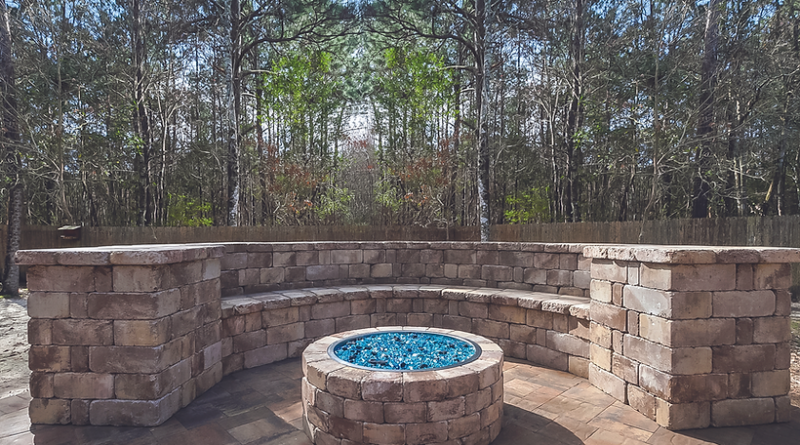The Ultimate Guide to Pavers for Your Outdoor Space
When it comes to enhancing the beauty and functionality of your outdoor spaces, few materials provide as much versatility and aesthetic appeal as pavers. Whether you’re looking to revamp your patio, driveway, walkway, or garden paths, pavers are a durable, cost-effective, and stylish option. In this article, we’ll explore the various types of pavers, their benefits, installation tips, and maintenance advice, so you can make an informed decision about using pavers in your next outdoor project.
What Are Pavers?
Pavers are flat, usually rectangular or square-shaped stones used to create durable, attractive surfaces for outdoor spaces. They are often made from various materials, including concrete, natural stone, brick, and even rubber, each offering distinct advantages. Pavers are installed in patterns or grids, making them a popular choice for creating walkways, patios, driveways, and more.
Types of Pavers
There is a wide variety of pavers available, each offering unique benefits. Understanding the different types will help you select the right material for your outdoor project.
- Concrete Pavers: These are the most commonly used pavers due to their affordability and versatility. Concrete pavers come in various shapes, sizes, and colors, allowing homeowners to create personalized patterns and designs. They are strong, durable, and require minimal maintenance.
- Brick Pavers: Made from clay, brick pavers are known for their timeless charm. They bring a classic, warm look to outdoor spaces and are highly durable. Bricks also weather beautifully over time, adding character to your landscape.
- Natural Stone Pavers: If you’re looking for a high-end, luxurious finish, natural stone pavers like granite, limestone, or sandstone are a fantastic choice. These pavers are strong, weather-resistant, and each stone has a unique appearance, giving your outdoor space a distinctive, natural feel.
- Rubber Pavers: Made from recycled rubber, these pavers are an eco-friendly option for creating surfaces like playgrounds, patios, or walkways. They offer excellent shock absorption and are slip-resistant, making them an ideal choice for areas with heavy foot traffic or children.
Benefits of Using Pavers
- Durability and Longevity: One of the primary advantages of pavers is their long-lasting nature. Whether you choose concrete, brick, or natural stone, pavers are built to withstand harsh weather conditions and heavy traffic, ensuring your outdoor surfaces remain intact for years.
- Low Maintenance: Pavers are relatively easy to maintain compared to other types of outdoor flooring materials. Regular sweeping, occasional washing, and resealing are usually enough to keep your pavers looking fresh and intact.
- Aesthetic Appeal: With so many styles, colors, and patterns available, pavers can elevate the look of your outdoor spaces. They can complement any home style, from traditional to contemporary, and can be arranged in intricate designs to match your personal taste.
- Flexibility in Design: Unlike poured concrete, which creates a continuous surface, pavers can be arranged in various patterns and layouts, such as herringbone, basketweave, or running bond. This flexibility allows you to get creative with your outdoor designs and create a space that reflects your style.
- Eco-Friendly Option: Pavers are permeable, which means water can pass through them, reducing the risk of water runoff and soil erosion. This makes them a sustainable choice for environmentally-conscious homeowners.
Paver Installation Tips
Installing pavers can be a DIY project, but it requires careful planning and execution. Here are some essential tips to guide you:
- Prepare the Base: The key to a successful paver installation is a solid base. You’ll need to excavate the area and create a stable foundation using materials like crushed stone or gravel. This helps ensure proper drainage and stability for the pavers.
- Lay a Sand Bed: After creating the base, add a layer of sand to create a smooth and level surface for the pavers. Use a level to ensure that the sand is evenly distributed.
- Install Pavers: Begin laying your pavers, starting from one corner and working your way out. Leave small gaps between each paver to allow for joint sand, which helps lock the pavers in place.
- Compact the Surface: After all the pavers are in place, use a compactor to press them into the sand and ensure they are securely set.
- Add Joint Sand: Sweep sand into the gaps between the pavers to lock them in place. This helps prevent movement and weeds from growing between the pavers.
Paver Maintenance Tips
To keep your pavers in top condition, follow these simple maintenance tips:
- Clean Regularly: Sweep away debris and dirt to prevent staining and maintain the pavers’ appearance. For deeper cleaning, use a pressure washer to remove stubborn grime.
- Reseal When Needed: Depending on the type of paver, you may need to reseal them every few years to maintain their appearance and protect them from stains, moisture, and UV damage.
- Weed Control: Regularly check for weeds growing between the pavers. If weeds do appear, remove them manually or use eco-friendly weed control methods.
- Repair Damage Promptly: If a paver becomes cracked or damaged, replace it as soon as possible to maintain the integrity of your surface. Pavers can be replaced individually, which is more cost-effective than repairing a large concrete slab.
Conclusion
Pavers are a versatile, durable, and aesthetically pleasing solution for many outdoor projects. Whether you are installing a new patio, driveway, or garden path, pavers offer long-lasting performance with minimal maintenance. With a wide range of materials and design possibilities, pavers can be customized to suit any outdoor space and style. When properly installed and maintained, pavers can enhance the beauty and functionality of your outdoor areas for many years to come.
If you’re ready to transform your outdoor space with pavers, consider consulting with professionals who can help you choose the best materials and design for your needs. Enjoy the endless possibilities pavers provide, and create a stunning outdoor space that enhances your home’s value and curb appeal.




